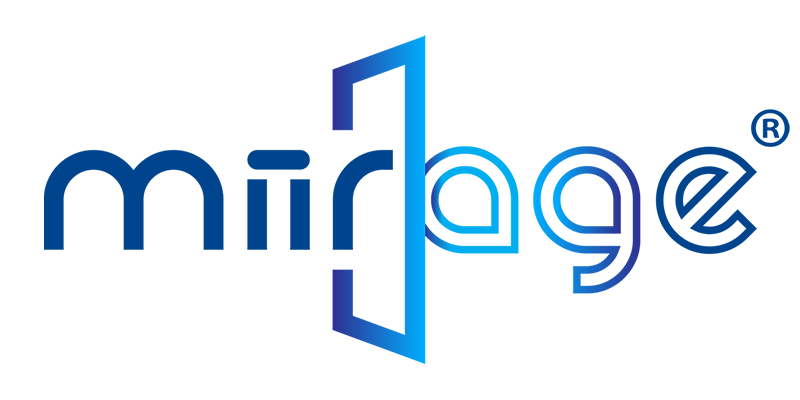The Rise of AI-Generated Content: A Creative Revolution With Challenges Ahead

Not long ago, AI-generated content was a novelty: distorted faces, clunky voices, and jumbled sentences. Today, it’s capable of creating cinematic videos, lifelike avatars, and voiceovers that sound indistinguishable from real people. And this is just the beginning.
We’re fast approaching a point where AI-generated content will be virtually impossible to tell apart from human-made media. With platforms like OpenAI’s Sora, Runway, Pika, and others, anyone with a few words of direction can now generate high-quality visuals, storyboards, animations, or promotional clips in minutes.
From Bottleneck to Breakthrough
For years, content creation has been one of the biggest bottlenecks in marketing and communication. Brands dreamed of producing Hollywood-level videos or compelling 3D animations, but settled for static images or looping GIFs because budgets were tight, timelines were short, and production was complex. Quality content was expensive, often tens of thousands of pounds, and required teams of specialists, from scriptwriters and voice actors to editors and visual effects pros.
AI has changed that.
Today, movie-quality visuals are available at a fraction of the cost. That doesn’t just mean cheaper production. It means more creativity, more experimentation, and more voices having the tools to be heard. AI is making it possible for small businesses, educators, charities, and creators without technical skills or huge budgets to tell their stories in bold new ways.
The Democratization of Creativity
One of the most exciting aspects of AI-generated content is how it puts creative power into the hands of people who never thought of themselves as “creatives.” You no longer need to master editing software, lighting rigs, or sound design. You just need an idea and a keyboard.
In this new landscape, direction becomes more important than execution. The best AI-powered content will still come from humans with taste, vision, and storytelling instinct, but the tools are finally catching up to their ambition.
That’s a huge shift.
For entrepreneurs, it means they can pitch ideas with a trailer instead of a PowerPoint. For marketers, it means they can test dozens of concepts before committing to a campaign. For educators, it means they can bring lessons to life in immersive ways previously unimaginable.
The Trade-Offs
Of course, this creative revolution doesn’t come without consequences.
The rise of generative AI brings real and valid concerns, especially for those who’ve built careers in animation, design, copywriting, or voice acting. Many artists are already seeing their work undercut or even imitated by AI tools trained on their own content. Entire job categories are being reshaped, and the transition won’t be painless.
There are also deeper cultural and ethical questions. As the line between authentic and synthetic blurs, how will audiences know what’s real? Will AI-generated influencers become more popular than human ones? Will a deepfake political ad be more persuasive than a real one? These are not hypothetical questions. They’re happening now.
And while AI can boost creativity, it can also overwhelm us with an endless flood of auto-generated content. Curation and trust will become just as important as creation.
A New Era
Still, this isn’t the death of creativity. It’s the next chapter of it. The same way the printing press made literature accessible, and smartphones put cameras in every pocket, AI is expanding the playing field. The most impactful stories, visuals, and ideas will still come from humans, but now, more people than ever can bring those ideas to life.
Yes, jobs will shift. Yes, the landscape will change. And yes, there will be conflict between the old ways and the new. But there’s also immense opportunity.
We are entering a period of unprecedented creative freedom fueled by tools that are faster, cheaper, and more powerful than anything that came before. And while that raises serious questions about ownership, authenticity, and originality, it also opens the door to voices and visions the world might otherwise never hear.
The future of content will be different, strange, exciting, and sometimes messy.
But it will never be boring.
Goodbye Flat. Hello Depth.
Unlike traditional screens, holographic displays don’t just show content, they project it into space. Depth, perspective, and realism transform an ad or product demo into something that feels alive, present, and impossible to ignore.
Think about it: in a crowded shopping mall or busy airport, a hologram isn’t just another rectangle on a wall. It’s a three-dimensional presence that stops people mid-stride. It’s not about pixels anymore; it’s about presence.
The Attention Advantage
In the attention economy, capturing even a few seconds of focus is gold. Research shows that holographic displays can triple audience engagement compared to 2D screens. That’s because the brain processes 3D visuals differently; they’re harder to tune out and far more memorable.
For advertisers and retailers, that means more dwell time, stronger recall, and ultimately, a higher return on investment. In other words, holograms don’t just look futuristic, they work.
Why Retail Media and OOH Are Turning to Holograms
Retail media networks and out-of-home (OOH) advertising are under pressure to deliver impact without oversaturating audiences. Static signage is fading into the background, while even digital billboards risk blending into the noise.
- In malls, they transform window shopping into an immersive experience.
- In airports, they offer travelers an unexpected, premium brand moment.
- In corporate spaces, they signal innovation before a single word is spoken.
It’s advertising that feels less like an interruption and more like an encounter.
Miirage and the Next Wave of Display Innovation
At Miirage, we see holograms not as a novelty, but as the natural next stage in display evolution. Our technology is designed for high-footfall environments, combining ease of installation with jaw-dropping impact. No headsets, no apps, no QR codes—just instant immersion.
And because our displays are built for scale, brands and OOH partners can roll out holographic campaigns quickly, without the usual risks that come with untested media formats.
The Screen Era Is Ending. The Hologram Era Is Here.
The display industry has always evolved in leaps, from radio to TV, from desktop to mobile, from static to interactive. Holograms are the next leap. They’re not a gimmick; they’re the new standard for grabbing attention in a world where attention is everything.
The only question left is: who will embrace it first?
Further Reading
- AI‑Generated Content: Challenges and Opportunities (EY)
- The Creative Frontier of Generative AI: Managing the Novelty‑Usefulness Tradeoff
- A Pathway Towards Responsible AI Generated Content
- Artificial Intelligence and the Creative Double Bind (Harvard Law Review)
- AI Slop: The Problem of Low‑Quality AI‑Generated Content
